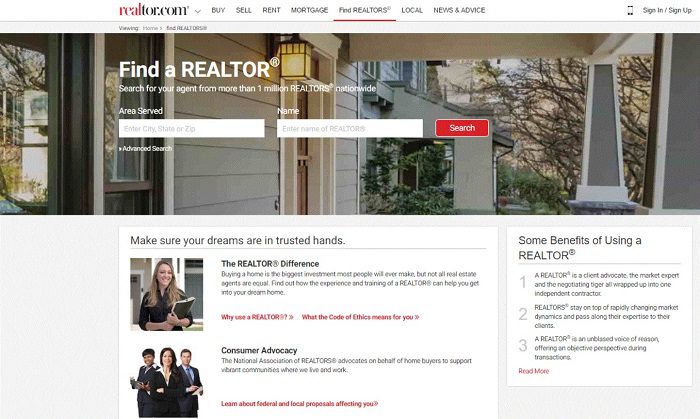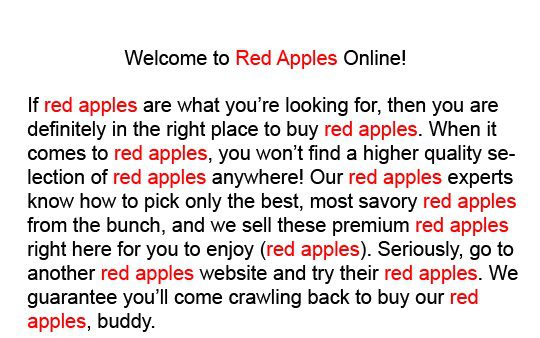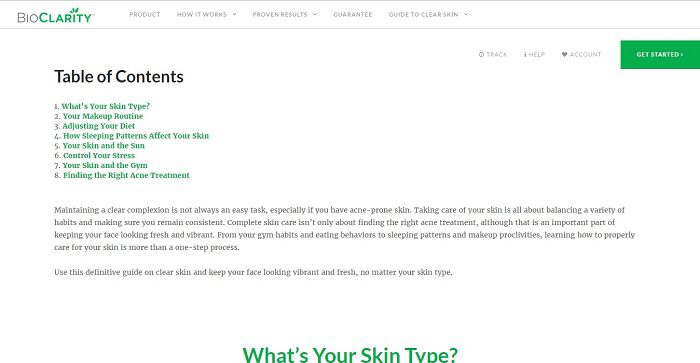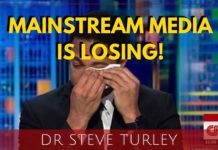The Top Ranking Factors
What is Penguin?
So you just built your website, ensured that your URL structure is technically sound, and are ready to attack the SEO challenges that lie before you. While reading up on best practices and how-to’s, you notice there has been a lot of news lately regarding Google’s real-time Penguin algorithm update.
You might be asking yourself questions like, “What is Google’s Penguin, anyways?”, “How is this connected with Panda and Pigeon?” and “Why does Google like birds so much?”
If you haven’t heard of any of these updates, fear not, we will explain.
Penguin History
Penguin is an algorithm update that Google first launched in April of 2012 in an attempt to better their search results by penalizing and removing sites that they had deemed to be spamming the internet in order to artificially inflate their ranking positions.
In particular, the update was focused on addressing sites that were using comment spam, link farms, article directories, and other quality-degrading tactics.
Over time, Google has invested millions of dollars into their technology, thus bettering their understanding of the web, which has resulted in various updates to their Penguin algorithm. Previously, with each iteration of Penguin, sites that had taken action towards removing their web spam or identifying unnatural links via Google’s disavow tool may have been positively rewarded by being moved back up in the rankings.
Additionally, as these updates rolled out, new sites or sites that were not previously caught by Penguin were once again at risk for penalization, while sites that were targeted by mistake (i.e., “false positives”) had the opportunity to gain back the true rankings their content deserves.
Penguin 4.0: The Final Update
Google announced on September 23, 2016 that Penguin 4.0 is live and officially an integrated part of its core rankings algorithm. The announcement had two key points:
- Penguin is now operating in real-time. This is predominately great news for all involved in the SEO sector, especially webmasters affected by previous iterations of Penguin. In the past, a website negatively impacted by Penguin would have to wait until the next update, which could take months or even years until rollout. Unfortunately, now that Penguin operates in real-time, gone is the luxury of comparing traffic graphs to update calendars, one of the primary ways to identify plummeting rankings due to Penguin. Of course, by simply removing low-quality links or submitting a disavow file business owners will not find that their site will spring back to their previous positions overnight. Rankings are still contingent on how and when Google’s crawlers encounter links pointing back at your website.
- Taken directly from a Google Penguin blog post, “Penguin is now more granular.” Whereas the update from 1.0 to 2.0 included page-level and keyword-level penalties for specific links, the 4.0 update adds another level of algorithmic complexity that devalues individual spammy links, rather than penalizing the receiving website as a whole. In basic terms: spammy links may not necessarily hurt you, but will not count towards your rankings. (Note: blatant manipulation of artificial link building can still incur a manual action penalty.) The possibility that individual links are being considered for algorithmic positioning, as opposed to the historical approach of aggregating a site’s entire backlink profile, means Penguin 4.0 could make users play by the rules in a far greater scope, as it removes any “cushion” that sites with large, positive backlink profiles once had.
Trying to Build a Website in the Age of Penguin?
When building your own website, remember that Google has publically stated the top three ranking influences in 2016 are:
1 & 2 – Links and Content
3 – RankBrain
The Age of Penguin?
It is important to note that Penguin is not the only algorithm update out there. There are several others and it is extremely beneficial for a small business owner to understand all of them, from Panda to Pigeon to Hummingbird and beyond.
As Penguin looks at the way websites connect via inbound and outbound hyperlinks, which is essentially how the internet works as a whole, we like using the term “The Age of Penguin”.
If you were to read no further, remember this key take away:
The user is always #1; ensure that all links – both inbound and outbound – provide value to the user.
For the purposes of this article we are going to focus on the top two ranking factors – links and content, as RankBrank is a comprehensive machine learning component which takes into consideration hundreds of various variables in real-time.
Links and content are naturally interconnected and this is perhaps the reason Google does not disclose to webmasters which is more important. Good content begets links; good content links out to authoritative external resources.
Let’s dive into the top ranking factors, starting with links:
Linking to Provide Value
Links are widely considered to be the greatest ranking factor for webpages. As the bread and butter of SEO, you’re going to want to spend the most time developing quality links that point back to your site.
That said; take caution around which link opportunities you pursue. As mentioned above, the Penguin 4.0 update devalues links that are spammy or come from low-quality sources, which in a best case scenario means you’ve wasted your time, with a worst case scenario being a manual action penalty incurred on your website.
Link Quality (LQ)
Link quality is an important factor when Google decides how trustworthy and viable your site is as a legitimate and appropriate answer to a user’s query.
If a website says they sell shoes, would it make more sense for them to be acquiring links from Home Depot, Lowe’s, and Ace Hardware or Nike, Reebok, and Adidas?
This is the fundamental concept behind link quality; a quality link is one that originates from a related, authoritative source.
Google considers a link to your website a “vote” for you and your content and wants to see related websites connecting with one another in an organic, uninfluenced way.
Link quality in the Age of Penguin works the same way. Spammy links don’t count, whereas links from high quality and related publications will certainly move the needle.
There are several main factors that indicate a quality link. The general rule of thumb is to ask yourself the following questions when evaluating the quality of a link from a third-party website:
- Is the linking source credible?
- Are they connected to my industry?
- Does the context of the link add value to their users?
If any of these answers are “no” then in this day and age of Penguin that link is probably not going to help you. Search Engine Land has a great article for those wanting to read more about this topic, which you can find here.
Content is King
Content is number #1 or #2 when it comes to ranking factors (most SEOs believe it to be ranked after links). However, keep in mind that without good content you will not receive any links.
In the Age of Penguin, you want to be creating content that provides value and is a “linkable asset”. Essentially, the content hosted on your website will hopefully be linked to by other websites and help position your website as a thought leader in your industry.
Some factors to account for when using this “linkable asset” content strategy:
- Content Quality
When assessing the quality of your new content, be sure to answer the following question:
Did this new content help your readers while providing a reason to spend a few more minutes browsing your site?
As I’m currently in the market for a new home, let’s use real estate as an example:
In this example from Realtor.com we see several benefits and tools being offered to their users. First, the search tool answers the question, “where can I find a realtor?”
Second, it provides helpful articles that are supplemental to the search query “where can I find a realtor?” such as guides to buying a home and selling a home.
There is not a lot of content on this page, which is not necessarily a bad sign; as this example is direct useful, and easy to navigate. Also worth noting is that this page not only holds the number one national ranking for the search query “find a realtor”, but also some, 50 other organic search terms.
Realtor.com is obviously a huge company, but the general concept here holds true: present useful information addressing the searcher’s intent while simultaneously providing additional resources to keep your reader on your website.
- Keyword Research
The second most important factor in creating linkable content is targeted keyword research. You could spend tens of thousands of dollars producing the best content ever, but if no one can find it then it won’t do you or your website any good.
While there are a plethora of third-party tools, some free and some paid, a free Google AdWords account will give you access to their Keyword Planner.
As you consider your content creation strategy, it is important to develop content around keywords in your industry that customers are searching for.
Also, remember not to stuff keywords in your articles! What was once a viable ranking strategy is now extremely toxic for your organic success. Google knows the different between keyword-stuffed content and beneficial content with a strong user-focus.
- Article Verbiage
The purpose of a search engine is to serve quality results that relate to a user-inputted query. Given this, it is vital to ensure that each piece of content relates to a single concept or idea.
As stated above, you do not need to over-optimize your content with keyword stuffing, as Google and RankBrain can use other indications (e.g. title tags and inbound anchor text) to interpret what a page is about.
To keep the real estate theme alive and to transition from a major national brand to a private, local example, let’s look at a company like SD Equity Partners:
Upon landing on this page the user can see clearly see what the article is about, and to appease the search engines there are also keywords in the H1 tag as well as the body of the article, which does not appear spammy to readers. Then, the article jumps right into the research – ultimately what the user was hoping to find.
Need an example of what not to do? Please do not do this with any on-page text, visible or not, or any HTML markups, such as title tags and meta descriptions:
Source: BBEXMarketing.com
This is not only detrimental towards any positive SEO efforts, but looks spammy to the end user and will cause visitors to quickly leave your website (if they even find it in the first place.)
- Blogs and Longform Content
Source: Hubspot Blog
Start a blog and write often. While these posts will not instantly rank at the top of SERPs for your desired keyword(s), it does help with your overall site depth and breadth.
Furthermore, it is an exceptional way to capitalize on related, long-tail search queries that may not appear in any keyword planning tool, Google’s or another company’s.
Consider this example from the health-science company BioClarity:
Clocking in at over 3,000 words, this eight-part guide positions BioClarity in a great spot to capture traffic surrounding long-tail keywords and backlinks as an authority in the skin and beauty space.
Don’t forget: Great content attracts links, which increases rankings, which brings in more traffic, which converts into customers.
Sounds great, how do I get websites to link to my project or website? There are several additional factors that go into a successful link building campaign that I’ll save for my next article (and maybe I’ll get around to answering that bird question, too).
Until then, happy SEOing.
Samuel Wheeler is a digital business consultant for Inseev Interactive. Since graduating from Northwestern in 2012, Sam has worked for fortune 500 companies and small start-ups, focusing on public relations, digital marketing, and search engine optimization. He is also the author of What is Link Juice? a resource for businesses on the benefit of link equity and internal linking. When Sam is not surfing the web, you can find him in the ocean off the coast of San Diego, surfing the waves.























